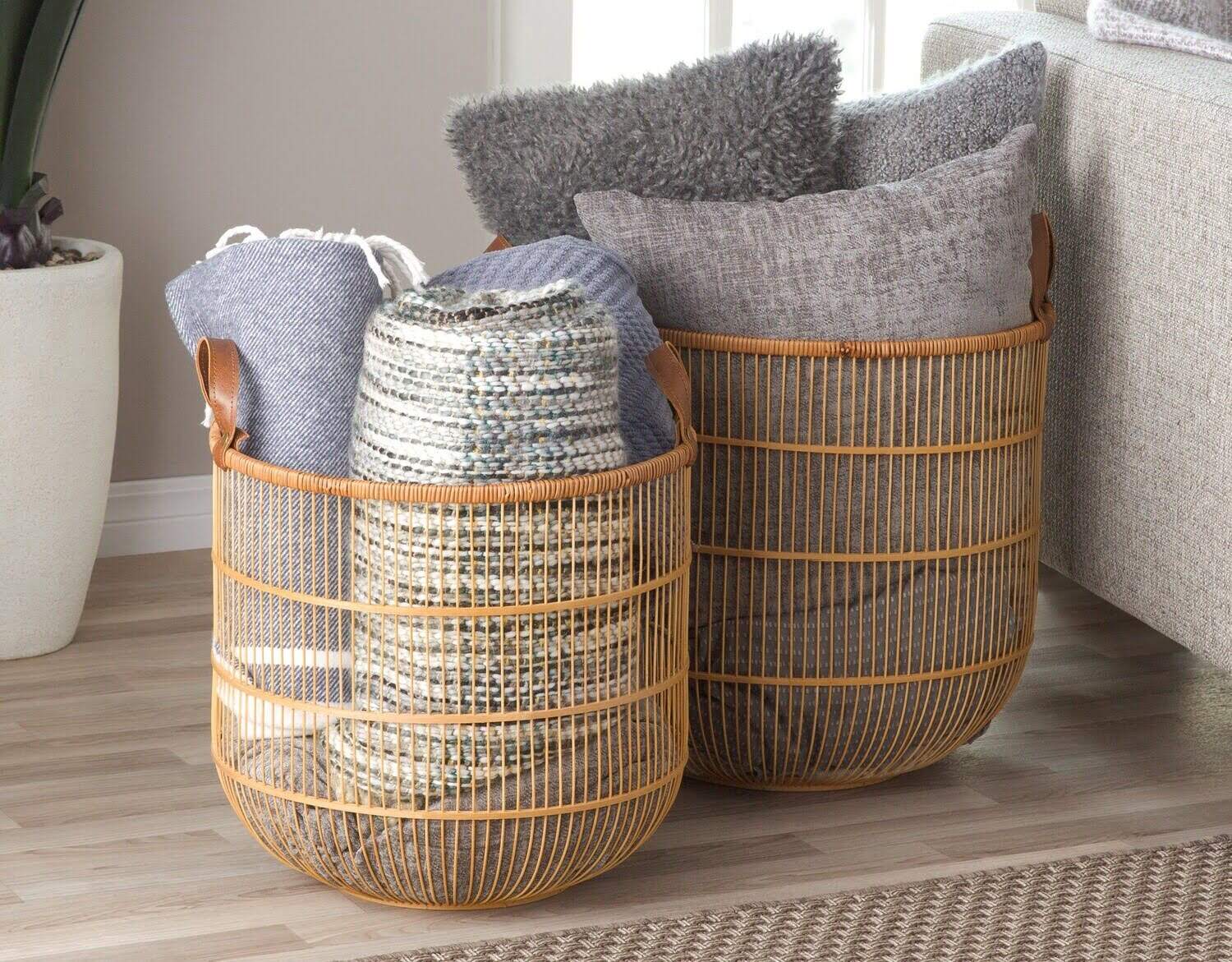

Articles
How To Store Blankets
Modified: February 23, 2024
Learn effective techniques for storing and preserving your articles with our helpful guide on how to store blankets.
(Many of the links in this article redirect to a specific reviewed product. Your purchase of these products through affiliate links helps to generate commission for Storables.com, at no extra cost. Learn more)
Introduction
Blankets are essential for adding warmth and comfort to your home, especially during colder months. However, when the seasons change and you no longer need to use them, it’s important to properly store blankets to keep them in good condition for future use. Whether you have a collection of cozy fleece blankets, luxurious wool throws, or decorative quilts, following the right storage techniques will help protect them from dust, moths, and other potential damage.
In this article, we will guide you through the process of storing your blankets effectively. We’ll cover everything from choosing the right storage space to cleaning and preparing the blankets, as well as different storage options, such as vacuum-sealed bags and plastic containers. By following these steps, you can ensure that your blankets remain fresh and ready to use whenever you need them, while also maximizing the space in your home.
Before diving into the storage process, it’s important to assess the condition of your blankets. If any blankets have stains, tears, or any other damage, it’s recommended to have them cleaned or repaired before storing them. This will help prevent further damage and maintain the quality of your blankets.
Now, let’s explore the step-by-step process of properly storing your blankets to keep them in pristine condition.
Key Takeaways:
- Properly storing blankets involves choosing the right space, cleaning, folding, and utilizing protective measures. This ensures blankets remain fresh, organized, and easily accessible for long-term use.
- Implementing labeling and organization strategies helps maintain a well-structured storage area, making it easy to locate specific blankets without hassle. Regularly reviewing and decluttering blankets also helps optimize space and keep the storage area tidy.
Read more: How To Store Wool Blankets
Step 1: Choosing the Right Storage Space
When it comes to storing your blankets, choosing the right storage space is crucial. The ideal storage area should be cool, dry, and free from any direct sunlight or extreme temperature changes. Excessive heat or moisture can promote the growth of mold and mildew, while sunlight can cause the colors of your blankets to fade.
Start by assessing the available storage options in your home. Look for areas that meet the requirements mentioned above. Some common storage spaces include closets, wardrobes, under-bed storage containers, or even a dedicated blanket chest. Make sure the space is clean before placing your blankets inside.
If you are planning to store your blankets in a basement or attic, take extra precautions to ensure the area is dry and well-ventilated. Consider using moisture absorbers, such as dehumidifiers or silica gel packets, to keep the humidity under control. This will prevent any dampness that could damage your blankets.
It’s also a good idea to avoid storing blankets in areas prone to pests, such as mice or insects. If you think your storage space may be at risk, consider using repellents or deterrents to protect your blankets.
Lastly, consider the accessibility of your storage space. If you have blankets that you use more frequently, it’s best to store them in a more easily accessible area. This will save you time when you want to retrieve them and avoid unnecessary hassle.
By choosing the right storage space, you set the foundation for proper storage and preservation of your blankets. Now that you have a suitable storage area, let’s move on to the next step: cleaning and preparing the blankets.
Step 2: Cleaning and Preparing the Blankets
Before storing your blankets, it’s important to ensure they are clean and free from any dirt, stains, or odors. Cleaning your blankets before storage helps prevent the accumulation of dirt and keeps them fresh for future use.
The cleaning method will depend on the type of blanket you have. Always refer to the care instructions provided by the manufacturer. Here are some general tips:
- Machine-washable blankets: If your blankets are machine-washable, it’s best to wash them before storage. Use a gentle cycle and a mild detergent. Avoid using bleach or harsh chemicals that could damage the fabric. Once washed, make sure to completely dry the blankets before proceeding to the next step.
- Dry-clean only blankets: If your blankets are labeled as “dry-clean only,” take them to a professional cleaner. They have the expertise and knowledge to properly clean and handle delicate fabrics without causing any damage. Once dry-cleaned, store the blankets in protective covers to keep them clean and dust-free.
- Spot-cleaning: If you have small stains or spills on your blankets, spot-clean them using a mild detergent and a clean cloth. Gently dab the stained area, being careful not to rub or scrub too vigorously. Allow the blanket to air-dry completely before proceeding.
Once your blankets are clean, it’s time to prepare them for storage. Start by folding the blankets neatly to minimize wrinkles and creases. Avoid folding them too tightly, as this could cause permanent creases or damage to the fabric. A loosely folded blanket allows for better airflow and reduces the risk of mildew.
If your blankets are particularly large or bulky, you may consider rolling them instead of folding. Rolling is a great option for thicker blankets, such as wool or chunky knit blankets. It helps save space and prevents any unnecessary strain on the fabric.
Now that your blankets are clean and properly prepared, it’s time to move on to the next step: folding and stacking the blankets for storage.
Step 3: Folding and Stacking the Blankets
Properly folding and stacking your blankets is essential for efficient storage and easy retrieval when needed. Follow these steps to ensure your blankets are neatly organized and protected:
- Start by laying the blanket flat on a clean surface, such as a bed or table.
- Fold the blanket in half lengthwise, bringing one edge to meet the other. This will create a long rectangle.
- If necessary, fold the blanket in half again, this time bringing the folded edge towards you.
- Continue folding the blanket in this manner until you have a compact, rectangular shape.
- If you have multiple blankets that are similar in size, stack them on top of each other.
- Make sure to place the larger and heavier blankets at the bottom of the stack and the lighter ones on top.
- If you have blankets of different sizes, it’s best to stack them separately to avoid any unnecessary strain on the fabric. Place smaller blankets on top of larger ones.
Remember to keep the folded blankets loose enough to allow for proper airflow. This helps prevent any potential moisture build-up and allows the blankets to retain their shape over time.
Additionally, avoid overstuffing the storage space with blankets. Overcrowding can cause the blankets to become tightly packed, resulting in creases and wrinkles. It’s important to strike a balance between maximizing storage space and maintaining the integrity of your blankets.
By following these folding and stacking techniques, you’ll create a neatly organized storage area for your blankets. Now, let’s move on to the next step: utilizing vacuum-sealed bags for storage.
Step 4: Using Vacuum-Sealed Bags
Vacuum-sealed bags are a popular storage solution for blankets, as they help reduce the amount of air and moisture that can penetrate the storage space. This method is particularly useful if you have limited storage space or if you want to protect your blankets from dust, mold, and pests.
Here’s how you can use vacuum-sealed bags to store your blankets:
- Place your neatly folded or rolled blankets inside the vacuum-sealed bag. Make sure not to overstuff the bag, as this can compromise the seal and effectiveness of the vacuum process.
- Seal the bag according to the manufacturer’s instructions. Most vacuum-sealed bags either require manual sealing, using a zipper or sliding closure, or they may require a vacuum cleaner to remove the air.
- If using a vacuum cleaner, attach the nozzle to the valve located on the bag. Turn on the vacuum cleaner and let it remove the air from the bag. As the air is removed, the bag will shrink, effectively compressing your blankets.
- Once the bag is tightly sealed and the air has been removed, store it in your chosen storage space.
- Avoid placing heavy objects on top of the bag, as this may cause unnecessary pressure and potentially damage the contents inside.
- If you have multiple vacuum-sealed bags, stack them carefully to prevent them from toppling over.
Vacuum-sealed bags not only save space but also provide an added layer of protection against moisture, dust, and pests. Just remember that it’s important to periodically check the bags for any signs of damage or air leakage. If you notice any issues, reseal the bag or consider transferring the blankets to a new bag.
Now that you’ve learned about vacuum-sealed bags, let’s explore another storage option: using plastic containers.
Store blankets in a cool, dry place to prevent mold and mildew. Avoid storing in plastic bags, as they can trap moisture. Instead, use breathable fabric storage bags or airtight containers.
Read more: How To Store Pillows And Blankets
Step 5: Using Plastic Containers
Plastic containers are an excellent storage option for blankets as they provide protection against dust, moisture, and pests while keeping your blankets organized and easily accessible. Here’s how you can effectively use plastic containers for storing your blankets:
- Choose plastic containers that are sturdy and have secure lids. Opt for containers made of durable materials such as polypropylene or polyethylene, as they are resistant to moisture and can withstand changes in temperature.
- Before placing your blankets inside the containers, ensure that they are completely dry. Any moisture trapped inside the container may lead to mold and mildew growth, which can damage your blankets.
- Fold or roll your blankets as mentioned in Step 3 and place them inside the containers. Remember not to overstuff the containers to allow for proper airflow.
- Close the lids securely to create an airtight seal. This will prevent dust, moisture, and any potential pests from entering the container.
- Label the containers to easily identify the contents inside. You can use adhesive labels or markers to indicate the type of blankets stored or the season they are intended for.
- Stack the plastic containers in your chosen storage space. Place the larger and heavier containers at the bottom to create a stable base.
- Make sure to leave some space between the containers and the walls or other objects to allow for proper ventilation and to avoid any potential damage to the containers or blankets.
- If possible, avoid stacking too many containers on top of each other to prevent unnecessary pressure on the lower containers and blankets.
Using plastic containers not only keeps your blankets safe from dirt and pests but also helps you easily identify and access the blankets when needed.
Now that you’ve explored the options of vacuum-sealed bags and plastic containers, let’s move on to another storage method: storing blankets in shelves or closets.
Step 6: Storing Blankets in Shelves or Closets
If you have available shelves or closets, storing your blankets in these spaces can provide convenient and organized storage. Here’s how you can effectively store your blankets in shelves or closets:
- Clean and prepare the shelves or closets before placing your blankets inside. Wipe down the surfaces and remove any dust or debris.
- Fold or roll your blankets as mentioned in Step 3.
- If you have shelves, place the folded or rolled blankets on the shelves. Make sure to leave some space between each blanket to allow for proper airflow.
- If you have a closet, you can hang some blankets on hangers. Use sturdy hangers with clips or loops specifically designed for hanging blankets. Avoid using wire hangers, as they can cause creases or damage to the fabric.
- For additional organization, consider using storage bins or baskets on the shelves or inside the closet. These can help separate different types of blankets, such as fleece blankets or quilts, and keep them neatly organized.
- Label the shelves or use tags on the hangers to identify the different types of blankets stored. This will make it easier for you to locate specific blankets when needed.
- Keep the shelves or closet doors closed to protect the blankets from dust and potential damage.
- Periodically check the shelves or closet to ensure that the blankets remain in good condition and to prevent any signs of pests or mold growth.
Storing blankets in shelves or closets not only keeps them organized but also ensures quick and easy access whenever you need them. Plus, it helps protect the blankets from dust and potential damage.
Now that you’ve learned about storing blankets in shelves or closets, let’s move on to the next step: protecting blankets from dust and moths.
Step 7: Protecting Blankets from Dust and Moths
Dust and moths can pose a threat to the condition of your stored blankets. Taking measures to protect your blankets from these risks will help ensure they remain clean and in excellent condition. Here’s how you can effectively protect your blankets from dust and moths:
- Use cotton or linen storage bags: Place your folded or rolled blankets inside breathable cotton or linen storage bags. These bags allow for airflow while keeping your blankets protected from dust.
- Avoid using plastic bags: Plastic bags can trap moisture and promote the growth of mold and mildew. It’s best to use breathable fabric bags to protect your blankets.
- Use moth repellents: Moths can cause damage to blankets, particularly those made of natural fibers like wool or cashmere. Place moth repellents, such as cedar blocks or lavender sachets, inside the storage bags or containers to deter moths from nesting or laying eggs on your blankets.
- Regularly vacuum or dust the storage area: Dust can accumulate on shelves, in closets, and inside storage containers. Regularly clean these areas to prevent dust from settling on your blankets.
- Avoid using strong-smelling detergents or fabric softeners: Strong scents can attract moths, so it’s best to avoid using heavily scented detergents or fabric softeners when cleaning your blankets.
- Inspect for signs of moths: Periodically check your stored blankets for any signs of moth activity, such as holes or larvae. If you notice any damage, take immediate action to prevent further infestation.
- Consider natural moth repellents: In addition to using cedar blocks or lavender sachets, you can also try using natural repellents such as dried rosemary, cloves, or eucalyptus leaves. These natural deterrents can help keep moths away from your blankets.
- Avoid storing blankets in areas with high humidity: Moisture can attract moths and create an environment conducive to mold and mildew growth. Ensure your storage space is dry and well-ventilated.
By taking these precautions, you can effectively protect your blankets from dust and moths, preserving their quality and ensuring that they remain fresh and ready to use whenever needed.
Now that you’ve learned about protecting your blankets from dust and moths, let’s move on to the final step: labeling and organizing your stored blankets.
Step 8: Labeling and Organizing Stored Blankets
Labeling and organizing your stored blankets is the final step in ensuring easy retrieval and maintaining a tidy storage space. By implementing proper labeling techniques and organization methods, you can quickly locate specific blankets without having to rummage through your storage area. Here’s how you can effectively label and organize your stored blankets:
- Label storage containers or shelves: Use adhesive labels, markers, or tags to clearly identify the different types of blankets stored in each container or on each shelf. For example, you can label containers as “Fleece Blankets,” “Quilts,” or “Winter Blankets.” This makes it easier to find the specific blanket you need.
- Prioritize based on frequency of use: If you have blankets that you use more frequently, place them in easily accessible areas. This way, you won’t have to dig through the entire storage space to reach them.
- Divide by season: If you have a large collection of blankets for different seasons, consider organizing them based on seasons. Have separate sections for “Spring/Summer Blankets” and “Fall/Winter Blankets.” This helps you quickly find the appropriate blankets based on the time of year.
- Group by size or thickness: Another organizing strategy is to group blankets based on their size or thickness. Keep larger or heavier blankets together, while storing smaller or lighter ones separately. This helps optimize space and makes it easier to locate the blanket you need.
- Use storage bins or baskets: Consider using storage bins or baskets within your storage area to further organize and categorize your blankets. You can place similar types of blankets in each bin or assign a specific bin for each family member. This adds an extra level of organization and keeps your blankets neatly separated.
- Create an inventory list: If you have a large assortment of blankets, create an inventory list. List the types of blankets you have, their sizes, and any other relevant details. This not only helps you keep track of your inventory but also serves as a reference when locating specific blankets.
- Periodically review and declutter: Regularly review your stored blankets to assess whether you still need all of them. If there are blankets that you no longer use or want to keep, consider donating or repurposing them to free up space and declutter your storage area.
By implementing these labeling and organizing strategies, you’ll be able to maintain a well-structured storage area and easily locate the blankets you need without any hassle.
With the completion of this final step, you’ve successfully learned how to store blankets effectively. By following these steps, you can ensure that your blankets remain in excellent condition and ready for use whenever the need arises.
Remember, proper storage is essential for preserving the quality and longevity of your blankets, so take the time to choose the right storage space, clean and prepare your blankets, fold and stack them neatly, and implement protective measures against dust and moths. By doing so, you’ll be able to enjoy the warmth and comfort of your blankets for years to come.
Happy storing!
Read more: How To Store Quilts And Blankets
Conclusion
When it comes to storing blankets, taking the right steps can make all the difference in preserving their quality and ensuring they are ready for use whenever you need them. From choosing the right storage space to properly cleaning, folding, and organizing your blankets, each step plays a crucial role in maintaining their freshness and prolonging their lifespan.
By selecting a suitable storage space that is cool, dry, and free from direct sunlight, you create an environment that helps protect your blankets from damage. Cleaning your blankets before storage ensures that they are free from dirt, stains, and odors, while proper folding and stacking techniques prevent unnecessary wrinkles and creases.
Utilizing storage options such as vacuum-sealed bags and plastic containers provides an added layer of protection from dust, moisture, and pests. And by implementing measures to ward off moths and keeping your storage area organized with proper labeling, you can easily locate your blankets when needed without any hassle.
Taking the time to store your blankets properly demonstrates your commitment to their care and maintenance. It allows you to enjoy their comfort and warmth for many years to come, saving you from the hassle of purchasing new blankets unnecessarily.
So, as you embark on your blanket storage journey, remember the importance of each step. Take the necessary precautions to protect your blankets from dust, moths, and other potential damage. And don’t forget to periodically reassess your blanket collection and declutter if necessary, ensuring that you maintain an efficient and organized storage space.
With these tips and techniques at your disposal, you can confidently store your blankets, knowing that they will remain in excellent condition and be ready to provide warmth and comfort whenever you need them. So go ahead and implement these strategies and enjoy the peace of mind that comes with well-preserved and neatly organized blankets.
Happy storing!
Frequently Asked Questions about How To Store Blankets
Was this page helpful?
At Storables.com, we guarantee accurate and reliable information. Our content, validated by Expert Board Contributors, is crafted following stringent Editorial Policies. We're committed to providing you with well-researched, expert-backed insights for all your informational needs.



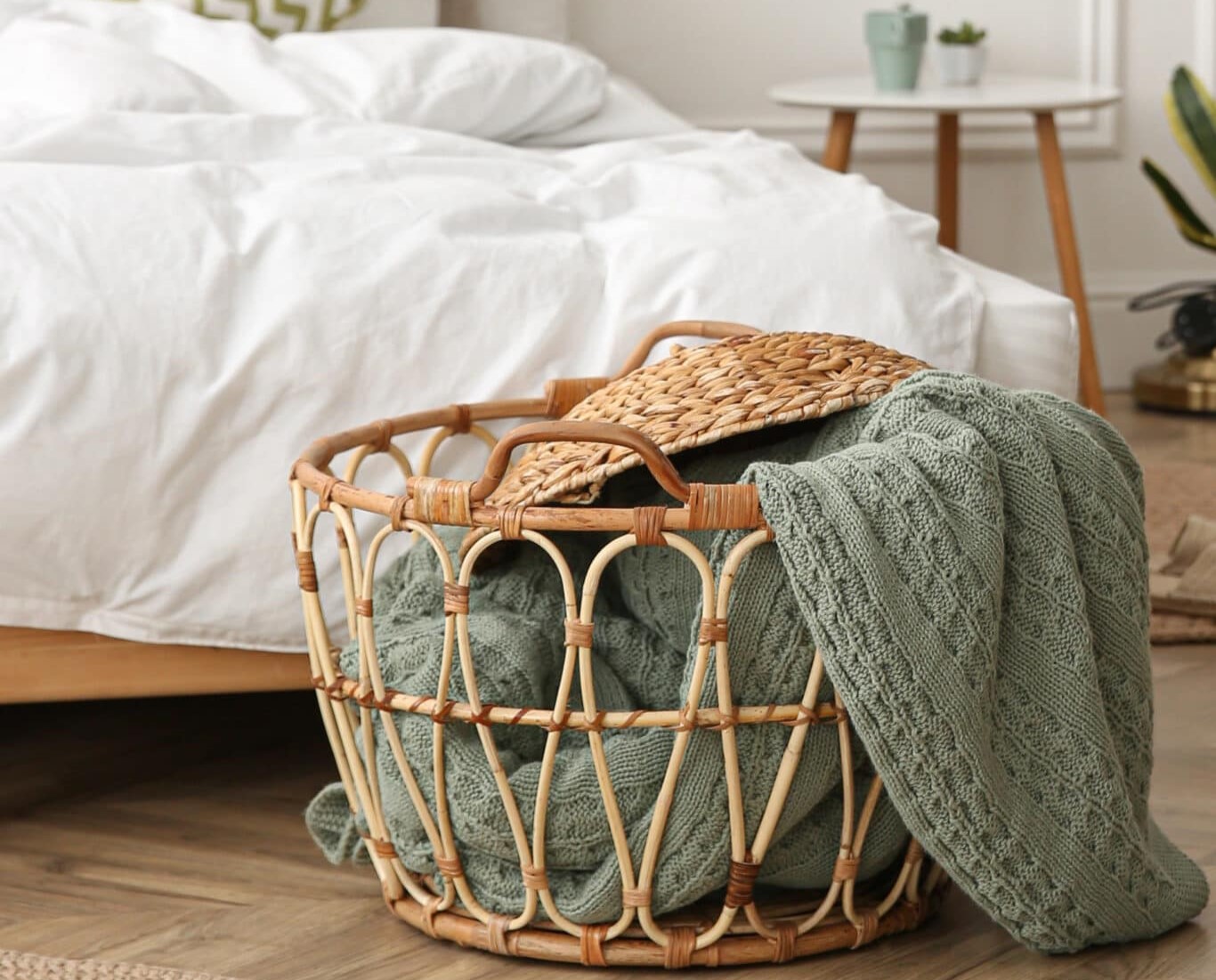
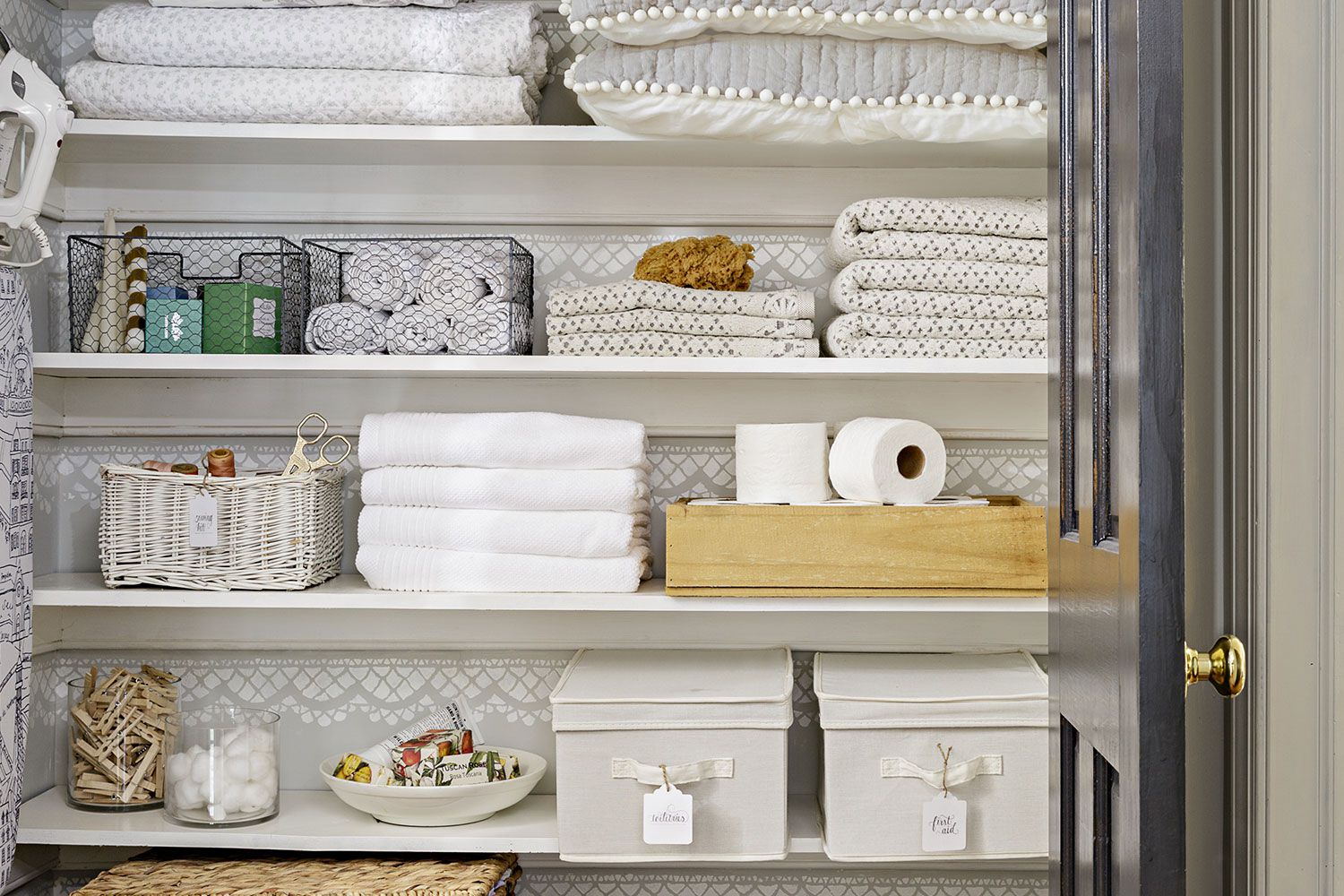
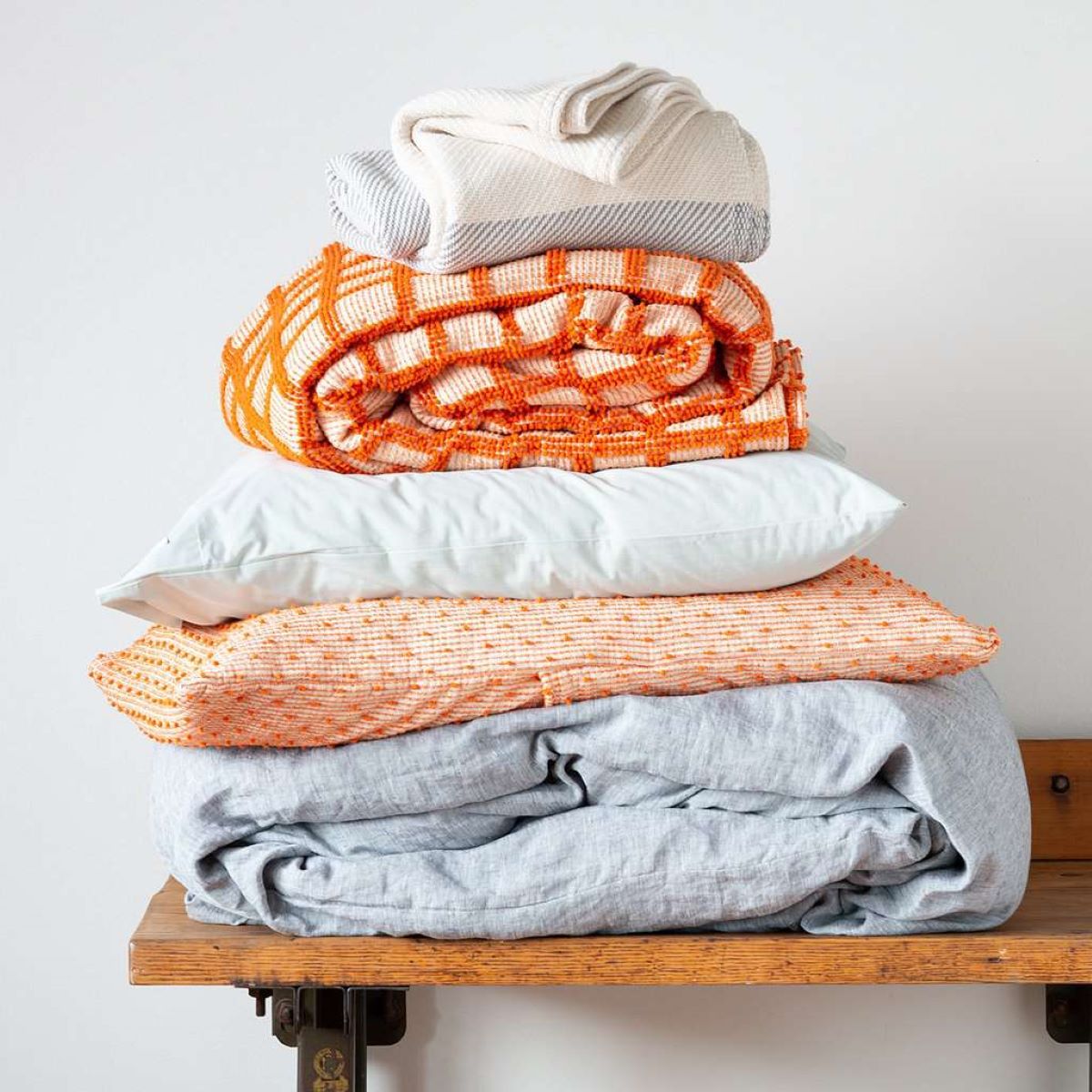
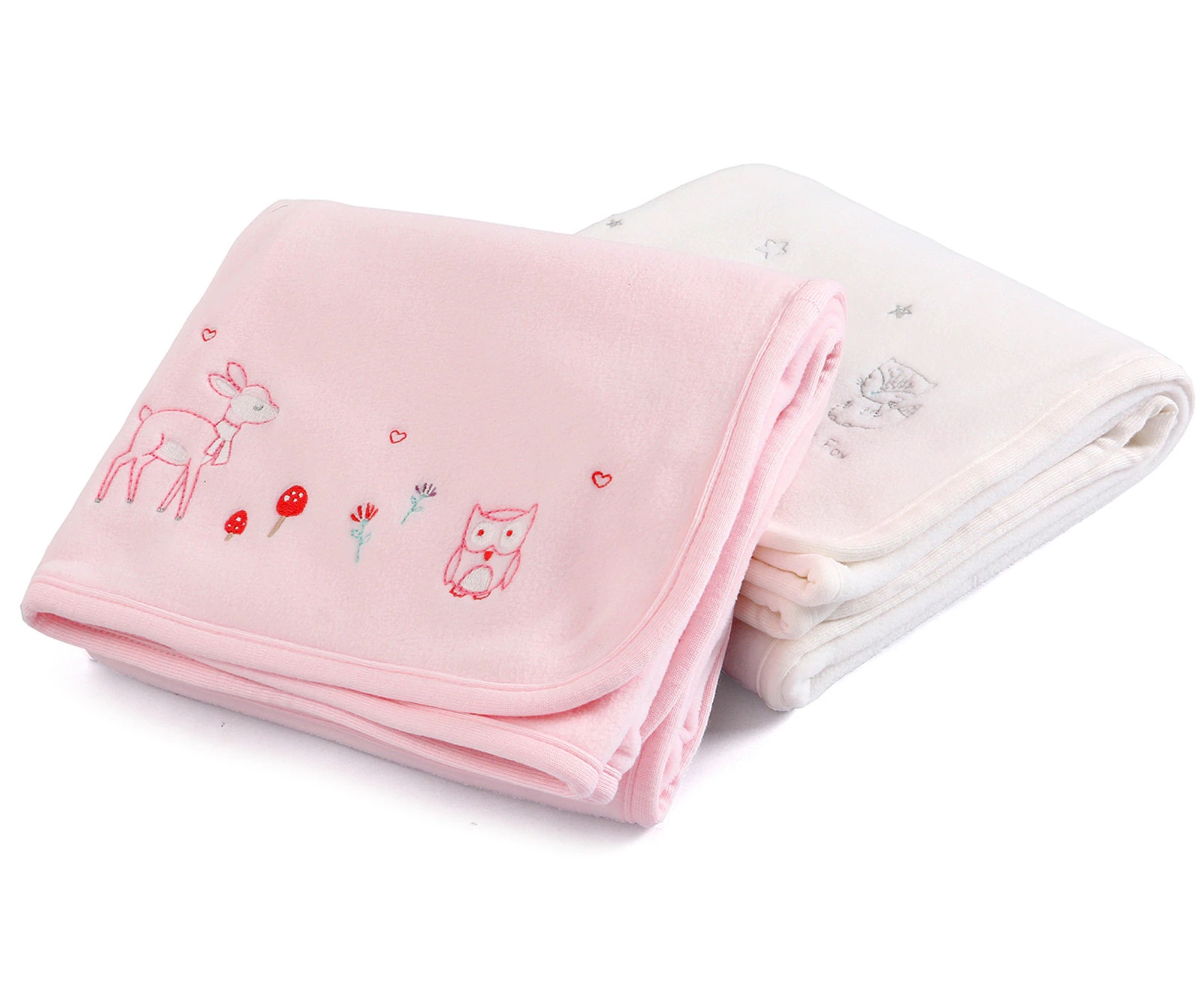
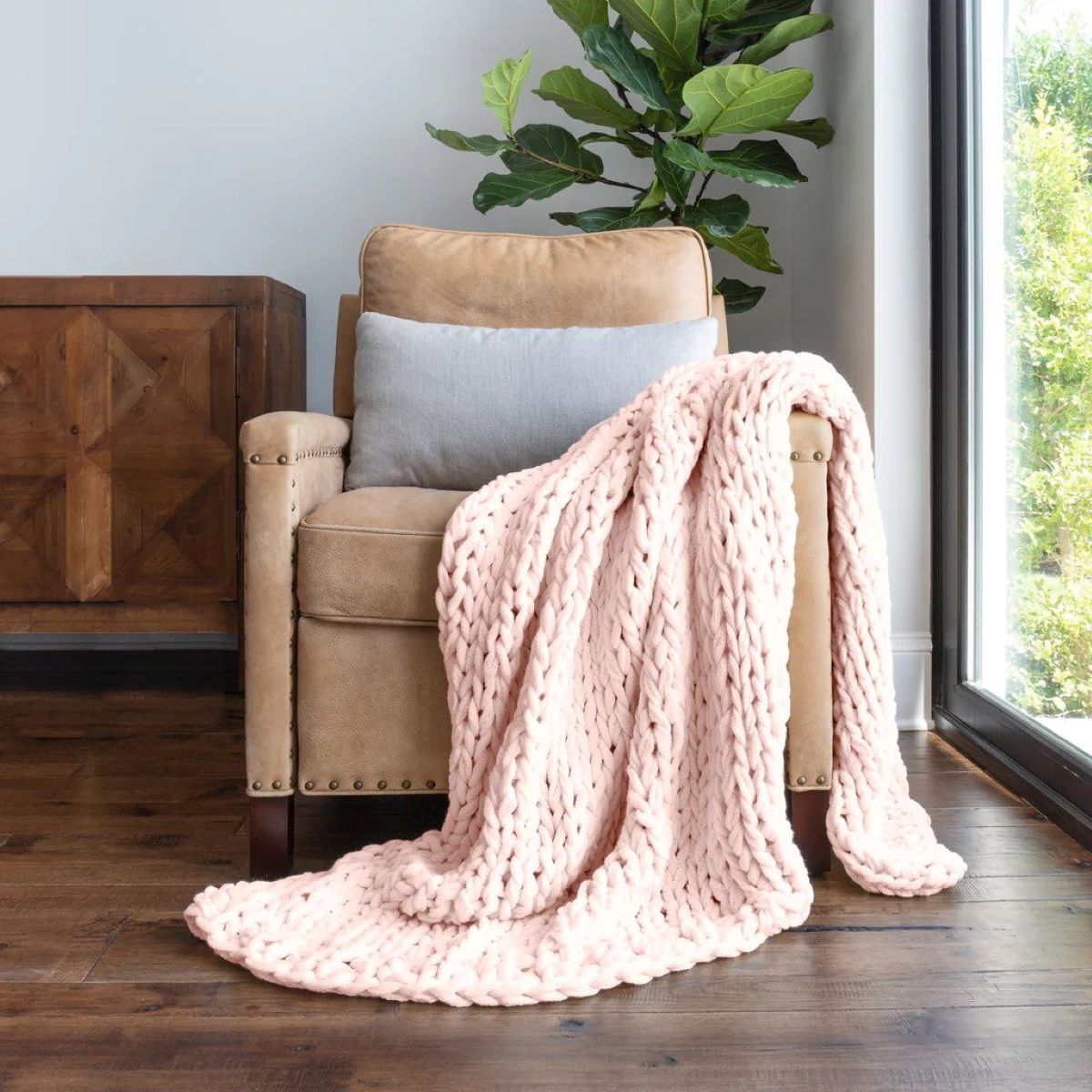

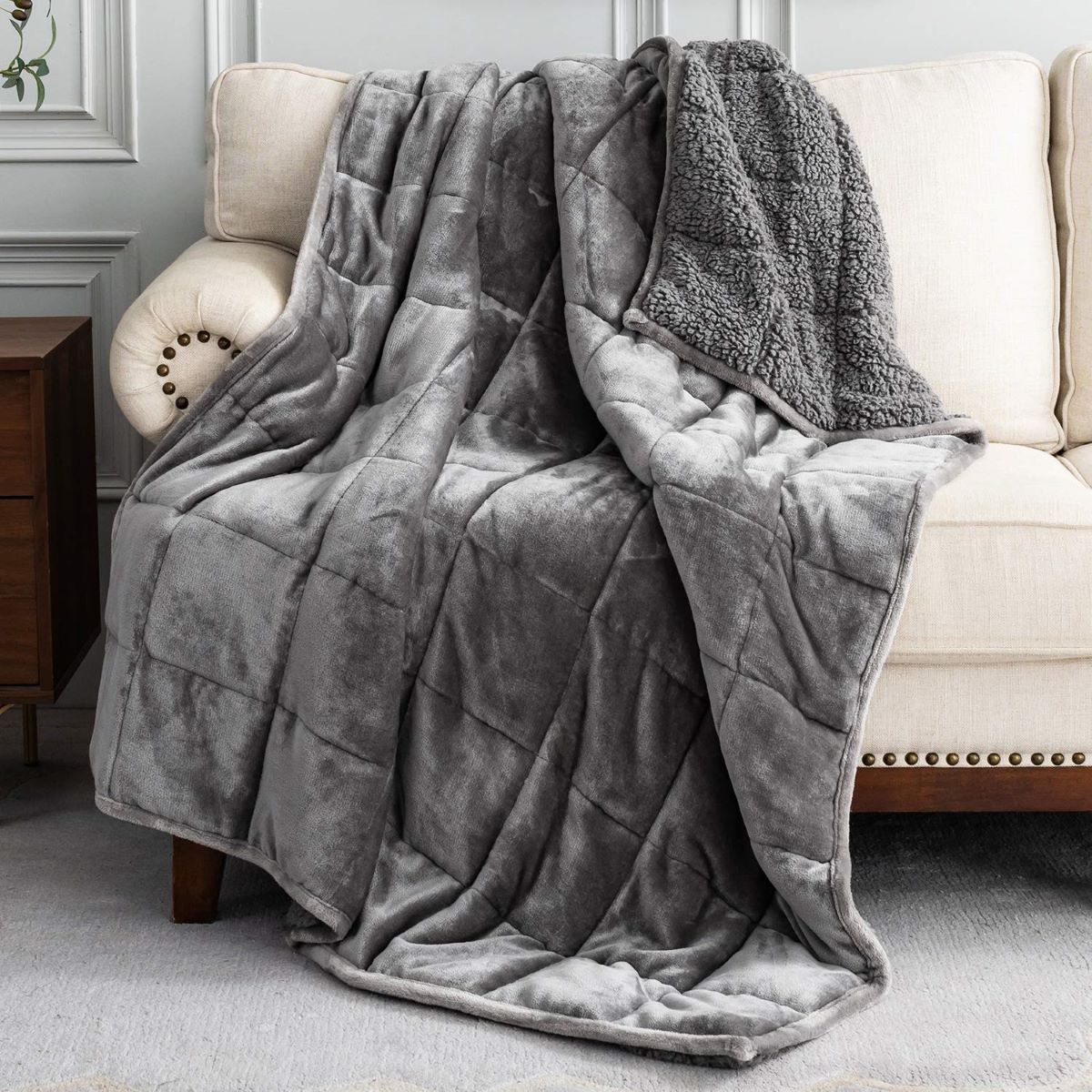

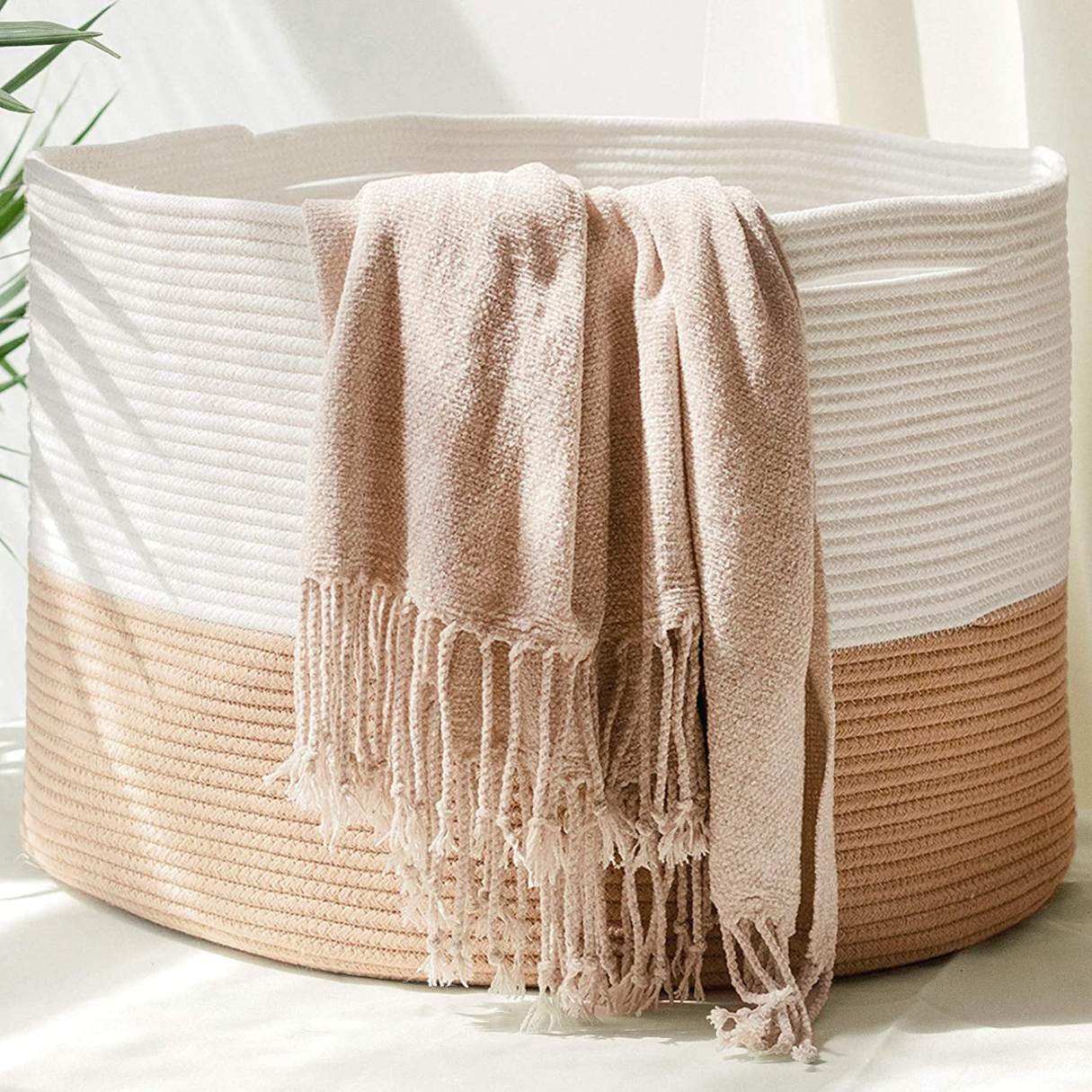
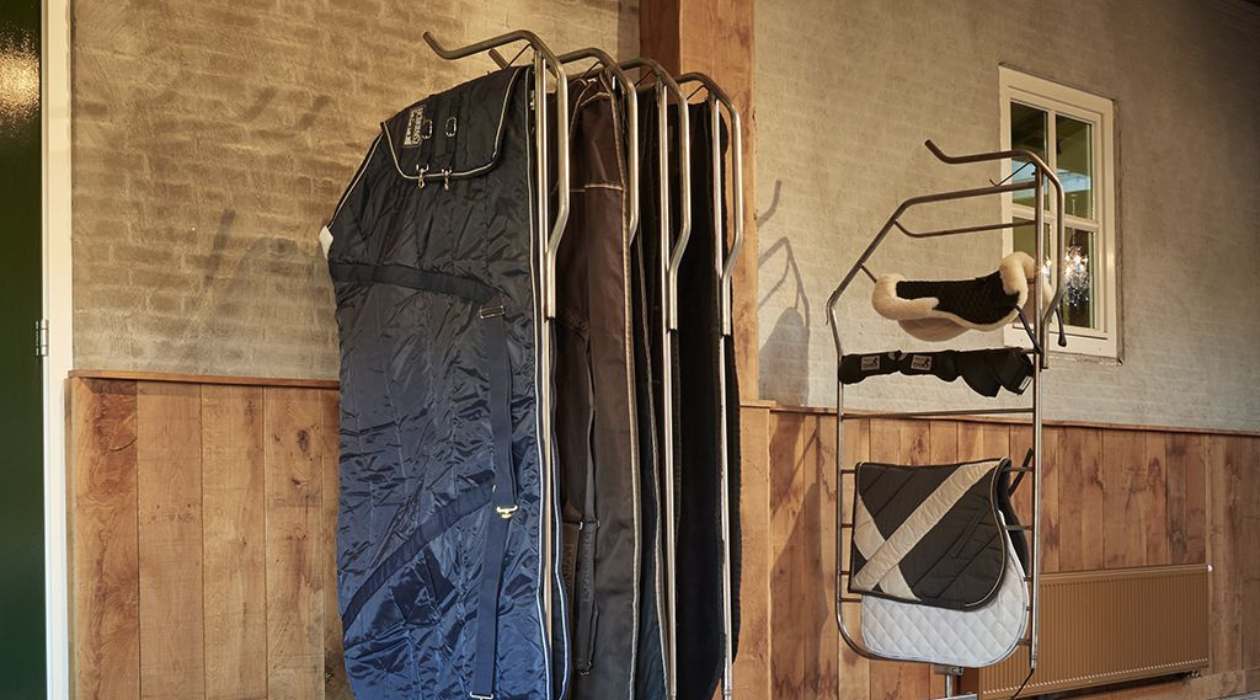

0 thoughts on “How To Store Blankets”